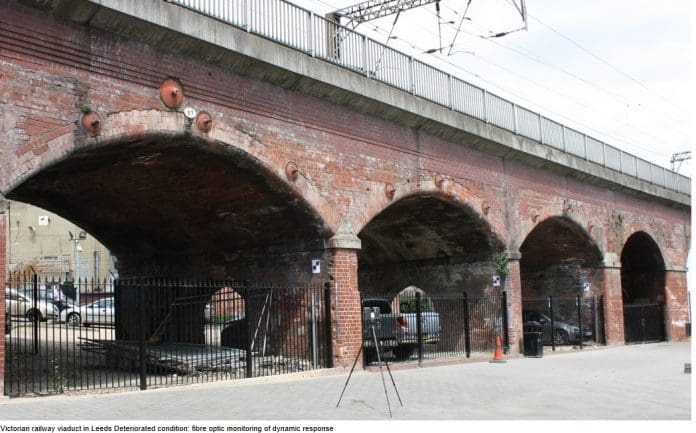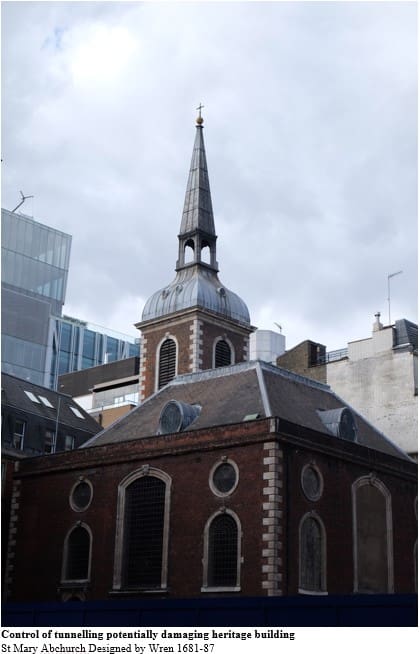
The Cambridge Centre for Smart Infrastructure & Construction distinguished lecture by Professor Lord Robert Mair reflected on the past 13 years of the CSIC’s work. Dr Fiorella Dell’Olio looks at some of the highlights
During his Distinguished Lecture, Professor Mair provided a detailed account of the 13-year history of the Cambridge Centre for Smart Infrastructure and Construction (CSIC). The centre was established with the aim of advancing and commercialising innovative technologies that can significantly improve the construction and management of infrastructure.
The lecture’s title was inspired by a famous statement by Lord Kelvin in 1883: “If you cannot measure it, you cannot improve it”. Professor Mair emphasised the importance of monitoring to understand the performance of infrastructure and therefore improve it.
The lecture focused mainly on innovative Fibre Optic (FO) sensing systems, which have been a very important part of CSIC’s activities and its success. It showcased a number of CSIC case studies and projects, featuring a range of innovative examples of CSIC’s work on performance-based design improvements, construction control, current infrastructure evaluation and early warning detection systems.
FO sensors to enable performance-based design improvements
At its inception, researchers at CSIC saw the potential to apply the use of newly developed FO sensing technologies to the monitoring of civil engineering structures during construction, and also for evaluating the whole life of new and existing assets.
Research work created new techniques to measure strain and temperature with FO to infer movement, displacement and cracking for various types of structures, providing unprecedented spatial resolution.
This has been applied to numerous cases of piles, retaining walls, structures and tunnels, providing important new insights into detailed soil-structure interaction mechanisms in large, complex civil engineering structures.
Professor Mair showed examples of the application of FO sensors for performance-based design improvements in shafts, tunnels and piled rafts. He particularly referred to the work on two large, circular, deep shafts in different ground conditions (Crossrail’s Limmo Peninsula main shaft and Thames Water’s Abbey Mills Shaft F).
FO cables were installed in diaphragm wall panels of the shafts along the panel reinforcement cages. Cable drums were used to install the optical fibre, which allowed the cages to be lowered into the bentonite-filled trenches for the deep walls without causing any construction disruption.
It was found that FO sensing successfully measured strains in the circular shafts, with compressive hoop strains being much more significant than longitudinal bending strains, which are relatively small. One important outcome of the study is that reinforcement for longitudinal bending can be significantly reduced, which is particularly important for design improvements.
Professor Mair highlighted that performance-based design improvements could also be made in tunnels, as showcased by the example of monitoring during the construction of cross passages in Liverpool Street Station tunnels on Crossrail, now the Elizabeth line.
This work entailed placing FO cables within the sprayed concrete lining (SCL) around the cross-passage excavation to monitor the changes in strain that occurred in the lining during excavation.
The measurements showed that the increase in strain was much more localised than finite element models had predicted, suggesting that the extent of thickened SCL was greater than needed. This is important as it indicates significant savings could be made on future designs, with additional benefits of improved safety and reduced carbon emissions.
The third example of performance-based design improvements focused on a piled raft for a building, involving reinforcing the top and bottom of the raft on a building to measure its bending and load distribution, as well as placing reinforcement in the piles.
Construction control
Construction control is another area that can benefit from FO sensing. Professor Mair highlighted how monitoring played a crucial role in ensuring the success of the Bank Station capacity upgrade project.

The project involved a complex tunnelling process in close proximity to a heritage building, Sir Christopher Wren’s St Mary Abchurch, FO cables were installed at different levels of the church building to measure curvature and horizontal strain, enabling a better understanding of how the building deformed and strained during the tunnelling process.
These data were crucial in identifying the impact of the tunnelling on the building, including the development of potentially harmful tensile strains on masonry and identifying any cracks caused by the process. Overall, the Bank Station project is a successful example of excellent construction control and reassurance for all parties involved.
Performance of existing infrastructure assets
The lecture also focused on the condition of masonry bridges and the need for a better understanding of vulnerable infrastructure assets.

To address this issue, CSIC and Network Rail implemented FO sensing technology to measure dynamic strain and load flow in a viaduct on a Leeds mainline station.
This technology demonstrated the satisfactory performance of the viaduct, despite its poor visual condition, enabling speed restrictions to be lifted. Two recently constructed bridges on the West Coast Mainline are another example where FO sensors have enabled continuous monitoring throughout the bridges’ life.
Early warning detection systems
FO cables, which can run for hundreds of metres or even kilometres, are crucial for continuous monitoring to provide warning of potentially catastrophic events.
Professor Mair highlighted the innovative use of geogrids instrumented with FO cables as early warning systems for the detection of slopes and sinkholes. He also showed how wireless sensors and satellite data can also provide early warning detection systems.
Conclusions
In conclusion, Professor Mair emphasised the enormous potential of FO sensing, the importance of data in maximising the efficiency of new and existing infrastructure, the current era of digital transformation being essential for this purpose: “The infrastructure industry must choose to be smart in order to shape a better future and provide better whole-life value”.
He expressed his gratitude to CSIC’s industry partners, including smart infrastructure clients, owners, operators, consultants, asset managers and the technology and information supply chain, for their invaluable support and contributions.
Dr Fiorella Dell’Olio
Communications manager
Centre for Smart Infrastructure & Construction
www-smartinfrastructure.eng.cam.ac.uk
















